From now until March we have an opportunity to improve and enhance our landscape with some planting of trees and shrubs, while at the same time maintaining our valuable hedgerows and woodlands with appropriate maintenance regimes.
I had a clear reminder of this last week when I stopped to admire the work being done by a local hedgelayer, John Dunbar, who was relaying an old mixed hedge line on the A41 road to Whitchurch, Shropshire.
He had been working on this particular stretch of road for several weeks, turning a long overgrown hedge into a new stock proof hedge line. He was essentially revitalising the base of the hedge to encourage a new vibrant hedgerow that in years to come will provide cover and a valuable food source for local wildlife.
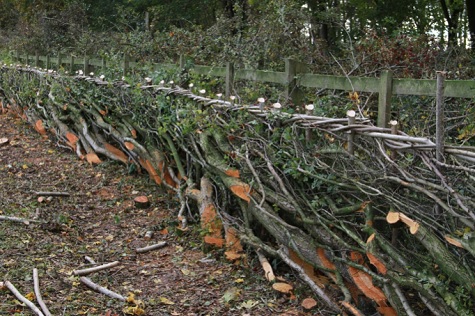
Hedgelaying is a country craft which has been practised for hundreds of years. The correct management of our hedgerows is essential if we are to conserve our wildlife and landscape for future generations.
However, the art of hedgelaying is slowly becoming lost, mainly due to the fact that many farmers now tend to use tractor flail hedge cutters for maintaining their hedgerows, purely on an efficiency and cost basis.
Hedgerows define our countryside and provide many environmental services but are also vitally important for wildlife as a refuge, a source of food, and as corridors along which they can move through the landscape.
The correct management of hedgerows is therefore vital if they are to survive and be healthy enough to provide a good habitat. Over-management by hard trimming to the same height each year will ultimately degrade the hedge, so it is hollow at the base and provide little shelter for wildlife. At the other extreme, neglecting a hedge will allow it to become tall and overgrown, eventually even to collapse.
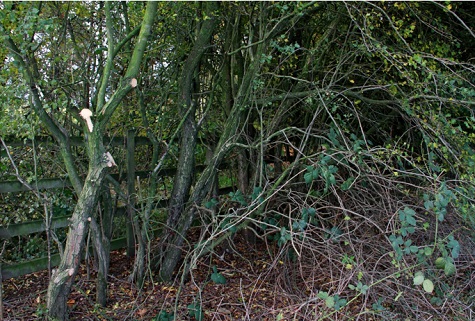
Sympathetic management allows blossom and berries to form, allows the hedge to increase in size and keeps the hedge in a healthy condition slowly and incrementally.
Eventually though every hedge needs to be rejuvenated from the base and hedge-laying is one of the best and most traditional ways of doing this. A laid hedge provides a stock proof barrier and a dense habitat for wildlife but most importantly it encourages new growth that starts a new life cycle of the hedge.
Hedgelaying declined after the 1939-1945 war due to many factors such as the availability of labour, the introduction of machines to cut hedges, wire fences and changes in agriculture that placed emphasis on production.
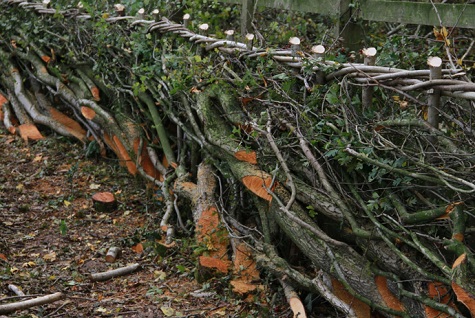
By the 1960s hedges were declining at an alarming rate. Lack of maintenance meant that hedges became tall and gappy with sparse growth at the base; in effect a line of trees. Many hedges were grubbed out to make larger fields that could be more efficiently managed by larger machinery.
In 1978 three hedgelayers – Mr Fred Whitefoot, Mr Clive Matthew, and the late Miss Valerie Greaves realised that soon the valuable skills of hedgerow management that had been acquired over hundreds of years would be lost forever. These founder members conceived the idea of setting up a national society to enable the skill of hedgelaying to be documented, and passed on to others.
Hence the formation of The National Hedgelaying Society the only charity dedicated to maintaining the traditional skills of hedgelaying and encouraging the sympathetic management of hedgerows for wildlife and landscape. The Patron of the Society is HRH The Prince of Wales.
The main aims of the Society are to promote a greater understanding and knowledge about the traditional craft of hedgelaying, encourage the development of hedgerow management skills through training and competitions and encourage the conservations and positive management of hedgerows. The NHLS operates a nationally accredited craftsman certification scheme and organises the National Championship each year.
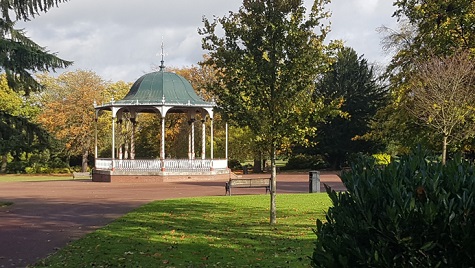
Also we must, where possible, try to plant as many new trees as we can to improve our environment. I personally would like to see more annual planting of trees on golf courses, schools, parks and urban open spaces.
What are the benefits of planting trees?
Trees give off oxygen that we need to breathe. Trees reduce the amount of storm water runoff, which reduces erosion and pollution in our waterways and may reduce the effects of flooding. Many species of wildlife depend on trees for habitat. Trees provide food, protection, and homes for many birds and mammals.
Currently there are a number of national and international tree planting schemes being promoted to encourage people to plant more trees, In last week’s Times newspaper there was an article on how the jobless could be employed to plant trees in the UK. Britain could tackle its jobs crisis and unlock future growth by employing people to plant trees, the report suggested.
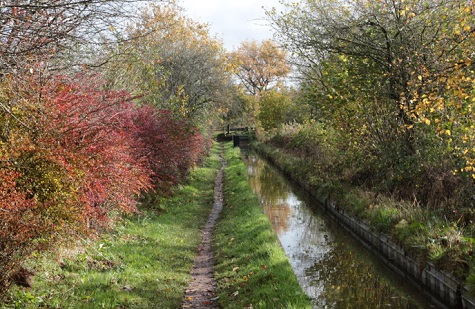
The government should set up a National Conservation Corps to help meet its target of planting 30,000 hectares of woodland each year, the Bennett Institute for Public Policy at Cambridge University said.
I recently published an article on the value of trees in TurfPro where I talked about the value these trees bring to our communities. Can you imagine towns and cities without any trees? They would be very depressing places to live. That’s why our parks, open spaces and urban neighbourhoods are so vibrant. We have a lot of visionaries to thank for leaving us with the landscapes we see and enjoy today.
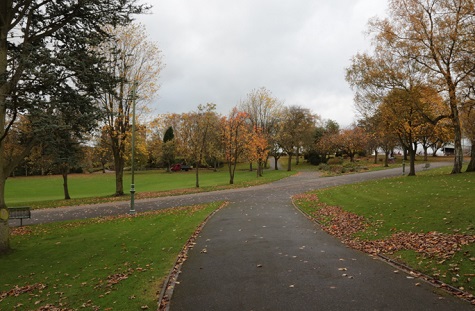
And finally, I came across an interesting site in Ireland that talks about creating more biodiversity within our local environment. We all should look at increasing biodiversity on our own doorstep.

In recent years we have seen the popularity of planting wildflower mixes. Many local authorities have been doing this for a number of years now, and have reaped the benefits both economically and aesthetically. Bernard Sheridan, himself a ex parks manager, has written a number of articles on this subject under his publishing name The Park Keeper.
It is time we realised the importance of biodiversity and how it helps create an urban landscape that is beneficial both to us and all the insects, mammals and birds. This will mean we can live together in harmony and reap the benefits of this natural landscape for both our mental and physical wellness – especially important during these difficult pandemic times.